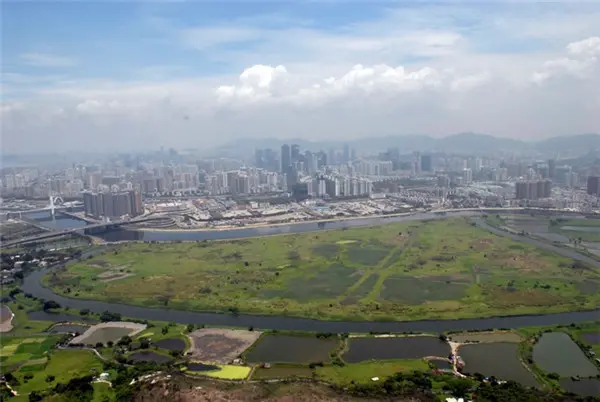The government’s recent announcement to redevelop the Lok Ma Chau Loop – a piece of swamp land adjacent to the Shenzhen river – into a technology park has stoked a range of emotions among the city’s business community and wider public.
Those against the plan point to Hong Kong’s puny investment into research and development (just 0.76 per cent of the city’s gross domestic product in 2015) and the city’s inability to foster the growth and development of a meaningful ecosystem over the past 20 years. They said that less than 3 per cent of employed persons work in the research and development sector. They also question whether a viable technology industry can exist in a city that sits right next door to Shenzhen, arguably one of Asia-Pacific’s largest and most successful technology hubs, and whether the location is too remote from the city’s central business district areas to be able to draw any meaningful industry interest.
The Lok Ma Chau Loop is the Cyberport fiasco all over again
For many global technology companies, Hong Kong has historically been viewed as a sales and marketing outpost given the relative small size of its market. Moreover, for companies that are able to operate in the mainland market, most already have significant operations in China. Microsoft, for example, has a number of offices scattered across China including the largest research and development facility outside of the United States in Beijing. And with market access getting harder not easier, it makes little sense for larger technology companies to expand operations in Hong Kong. In many instances, Singapore has been viewed as a more viable location to establish regional headquarters benefitting from the larger and more open markets of Southeast Asia.
So with this in mind, does Hong Kong really need another technology park? And, one that potentially may be four times the size of the existing Hong Kong Science Park, no less.
Science park boss urges Hongkongers to support Lok Ma Chau Loop project with Shenzhen
Hong Kong’s standing as a technology hub falls short of other global cities. Even within the region, cities such as Singapore, Shenzhen in China, Bengaluru in India and Hsinchu in Taiwan are often seen as being further down the road in terms of developed ecosystems. Still that does not mean we should not try to continue to support the growth of the industry in the city.
Data from our recently published JLL report ‘Tech firm office location choice—how does it work in Asia Pacific?’ showed that technology companies accounted for about 17 per cent of the region’s gross leasing volumes in the 12-months up to the end of the third quarter of 2016. Put in simpler terms, one in every six square foot of Grade A office space leased over this period was from the technology sector. This is a sector that is still growing and Hong Kong needs to be in a position to be able to capture some of this growth.
Transparency key to success of hi-tech park at Lok Ma Chau
JLL surveyed a range of technology companies to ascertain what were the key factors driving the decisions behind where they establish offices within the region. ‘Affordable real estate’ ranked as the third most important factor after ‘access to talent’ and ‘government policy’.
Sceptics often cite the ‘failures’ of the city’s two other existing and much maligned technology parks – Cyberport and Hong Kong Science Park – as a reason why another should not be built. Both parks have been criticised in the past as being commercial failures given the relatively low rents being achieved. While industry take-up has been slow, both parks now enjoy relatively high occupancy rates. Importantly, they are creating an ecosystem for the industry to develop and over time, contribute to the growth of the broader economy.
Lok Ma Chau Loop has nothing to do with hi-tech – it’s all about profit
At the moment, most fledgling start-ups have shown a preference to be located in the city’s central business districts. Even those that are being funded by programmes offered by the city’s technology parks do not always fully utilise the offices provided. Instead, many start-ups prefer to initially work from home, coffee shops and increasingly co-working spaces, where subscriptions for a seat can cost as little as HK$3,000 per month.
But as these companies grow, this situation will change. Without adequate real estate to cater for future growth, it will be very difficult for Hong Kong to be able to ever develop a flourishing technology sector. The race to attract more technology companies has already started in other parts of Asia and Hong Kong needs to do its best to ensure that it has a decent chance to remain in the conversation.
(South China Morning Post)
 简体中文
简体中文

